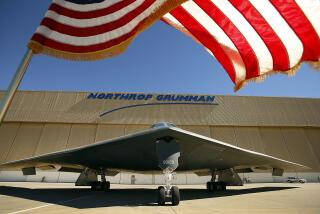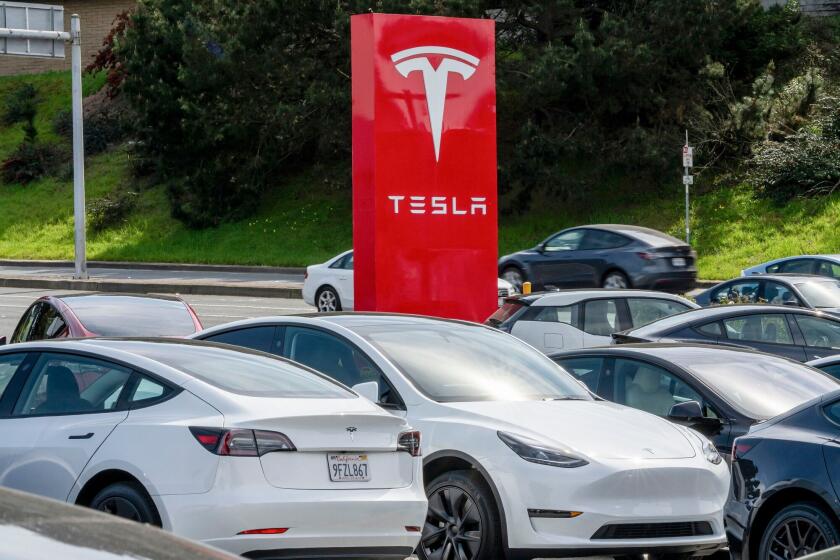Northrop Plant Prepares for Big Jobs Cuts as B-2 Orders Level
- Share via
Two thousand B-2 workers in Palmdale by the year 2000. That’s the employment subtext for Northrop Grumman Corp.’s Palmdale B-2 assembly plant after President Clinton’s decision not to order any more B-2 bombers in the administration’s budget for next year.
Right now, about 3,300 workers are on hand at Northrop’s Palmdale plant, but with the 20th, and seemingly final, B-2 scheduled for delivery to the Air Force in 1998, Northrop Grumman was already planning to trim its Palmdale work force to about 2,000 by the start of next decade.
Without any new orders, the only B-2 work Northrop has on hand beyond 1998 is a modification program already scheduled to upgrade older B-2 aircraft, and that work should last through 2002 or 2003, said Jim Hart, a Northrop spokesman.
Although the Clinton administration’s announcement was a painful surprise, B-2 workers in Palmdale were already looking at the downside of the B-2 life span anyway.
“We had to plan for no more B-2s” even before Clinton’s decision, Hart said.
Northrop has about 8,400 employees working on the B-2 project at three Southland sites, and the company was already planning to cut its B-2 staff to 7,500 by the end of 1995, Hart said.
The biggest share of B-2 work is handled at the company’s Pico Rivera operation, with 5,000 workers, about 4,700 of whom work on the B-2. Manufacturing is done there on the high-tech composites that make up much of the radar-evading aircraft. Even before Clinton’s decision, the Pico Rivera site was scheduled to close by 1999.
Final assembly of the B-2 aircraft is done in Palmdale, and an additional 500 Northrop staffers work nearby at Edwards Air Force Base in flight testing.
Some Palmdale workers will keep their jobs into the next decade because that plant will handle modification work to improve the B-2’s radar system and other avionics.
Palmdale was selected over Pico Rivera because it has big bay hangars to house the aircraft, Hart said.
Overall, the price tag of the 20 B-2 bombers will hit about $44 billion, including research and development costs, Northrop said. The first B-2 was flown in 1989.
In 1994, the Air Force asked Northrop Grumman for a cost proposal for new B-2s, and the company had hoped the Clinton administration and the Pentagon might recommend buying three new aircraft a year, at a cost of $750 million per plane.
* TOUGH CHOICE
Clinton’s big risk on B-2. A1
More to Read
Inside the business of entertainment
The Wide Shot brings you news, analysis and insights on everything from streaming wars to production — and what it all means for the future.
You may occasionally receive promotional content from the Los Angeles Times.











